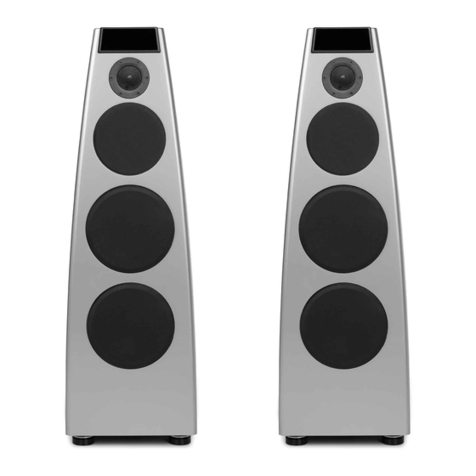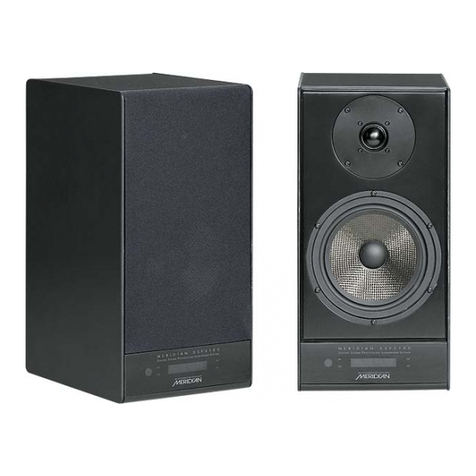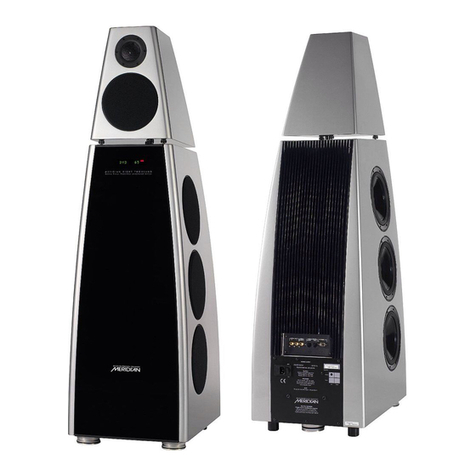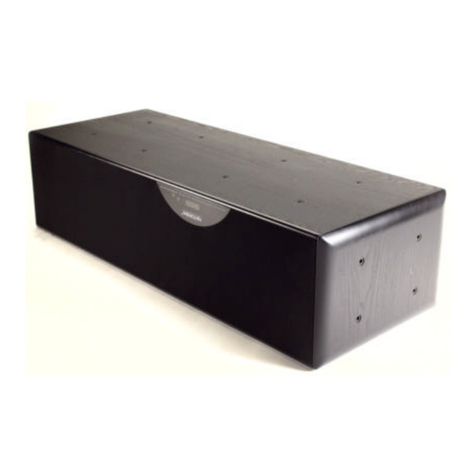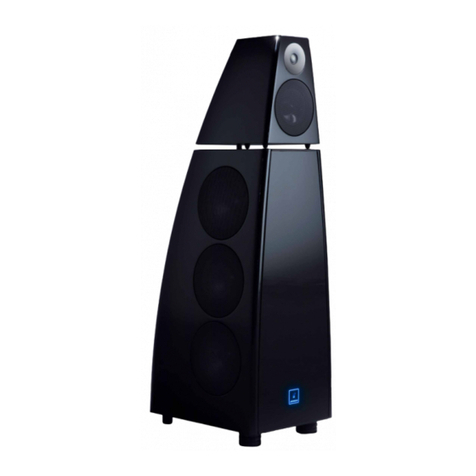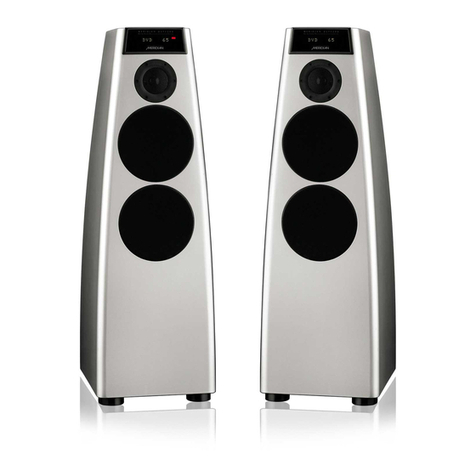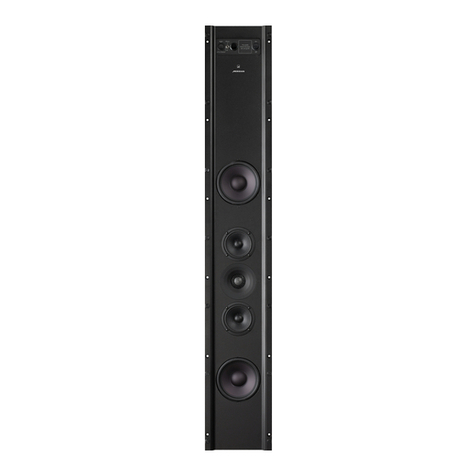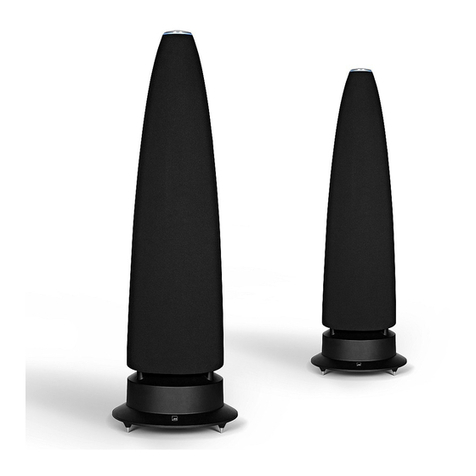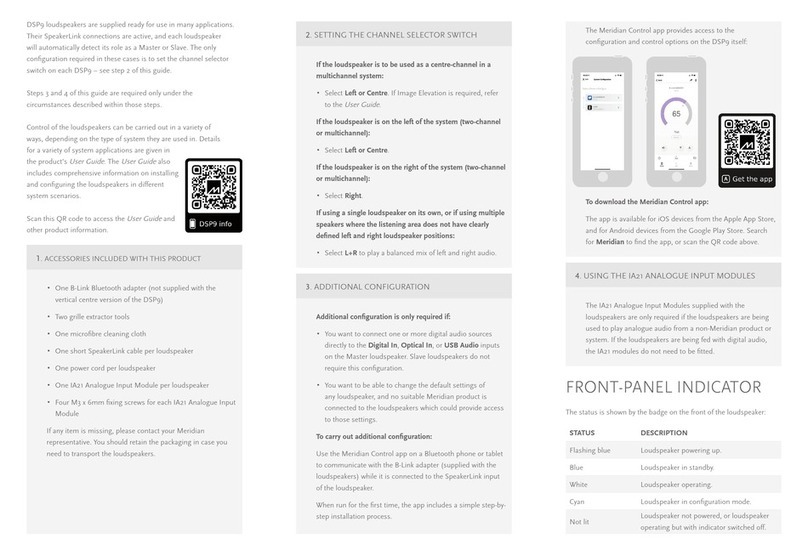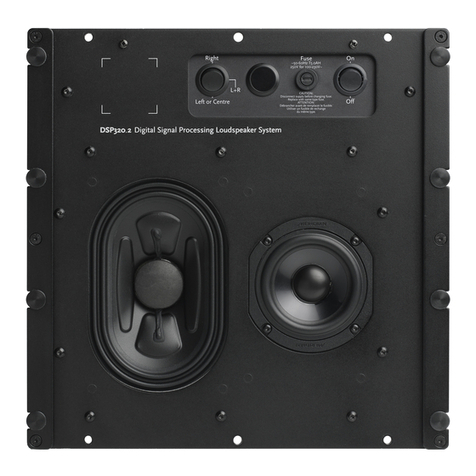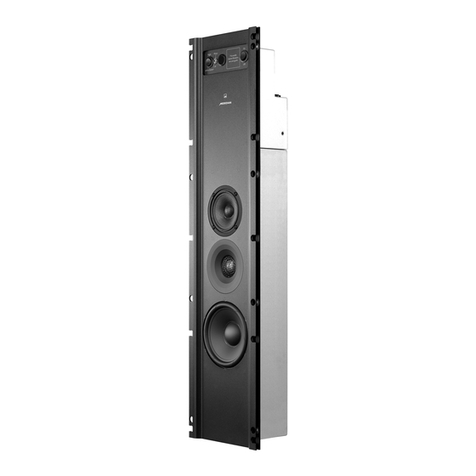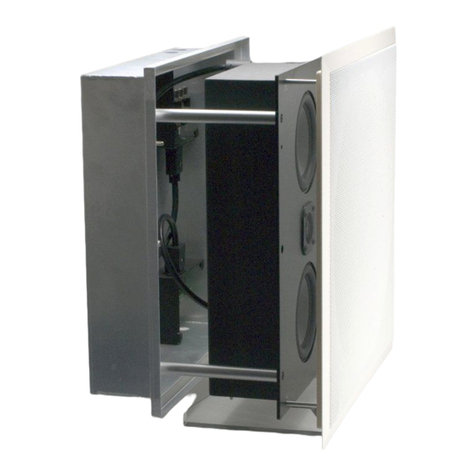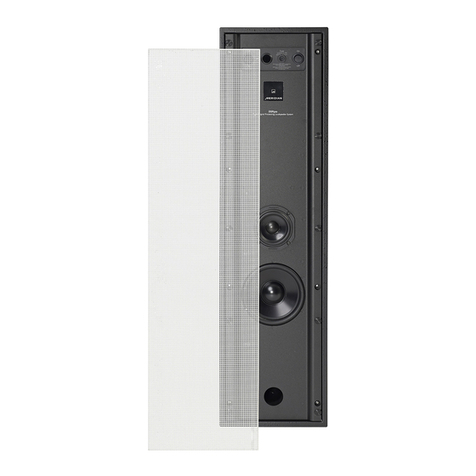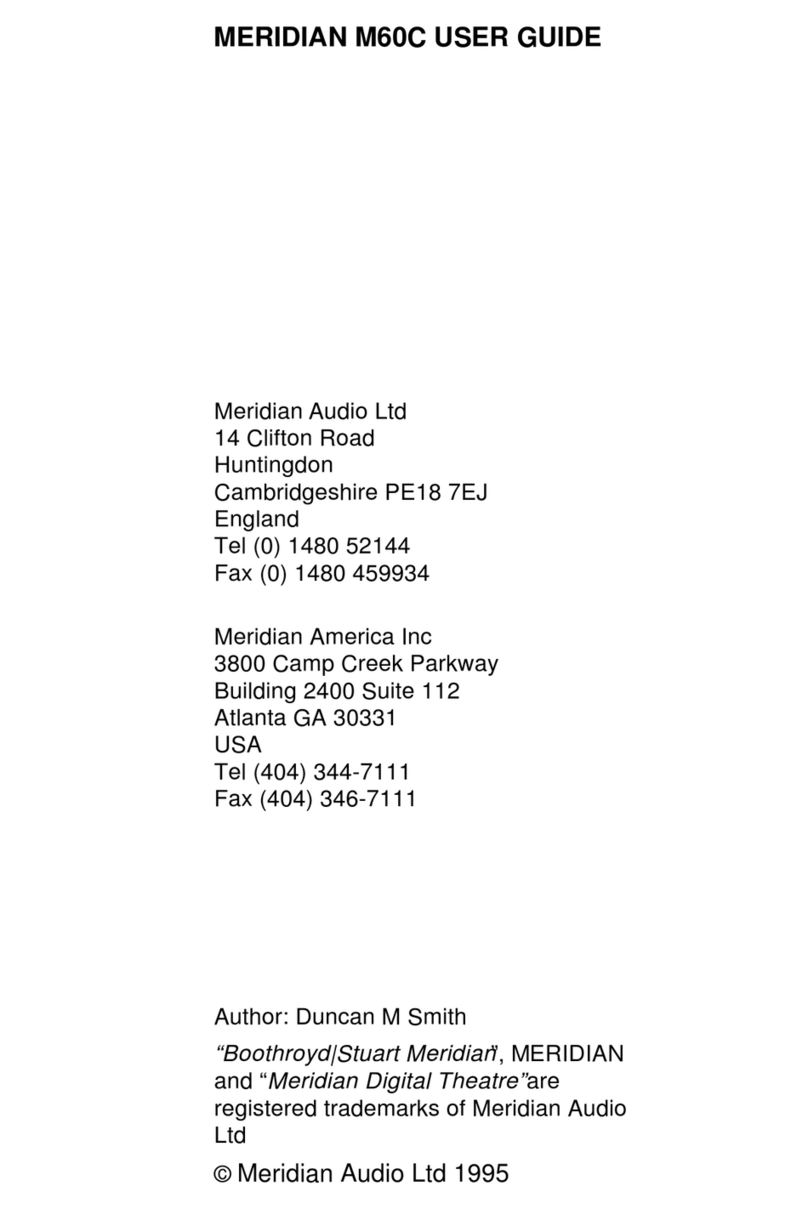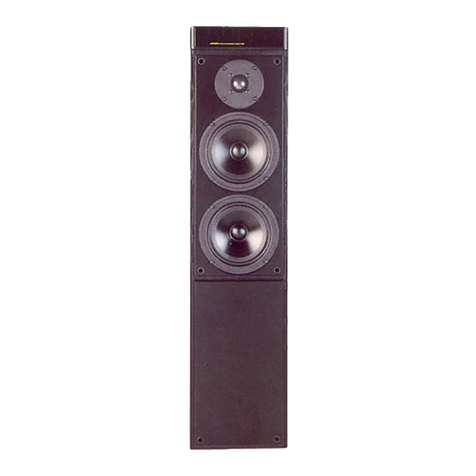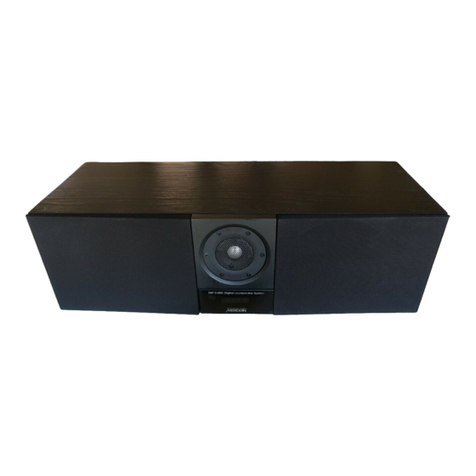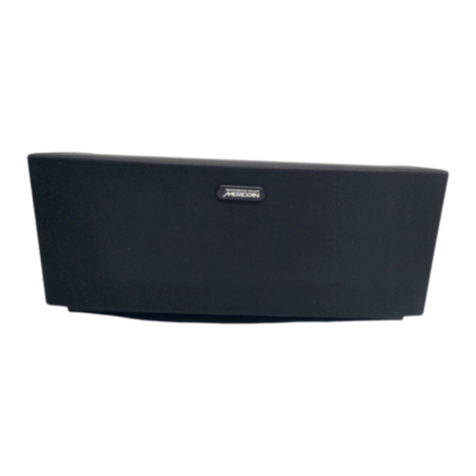Being able to deliver bass from an
enclosure an eighth of the size is a use-
ful ability, because it enables us to make
loudspeakers that are physically the
right size: on a human scale (see later).
That means that they will fit into a room
more easily, and take up less space.
But it also means that stereo and sur-
round imaging will be significantly
improved, because the nearer to a point
source your loudspeakers are, the more
they can be made to disappear when
recreating a soundfield in your listening
room, especially when using Meridian’s
advanced decoding technology such as
Ambisonics and Trifield.
The Digital Link
Once we began to see the introduction
of widespread digital music distribution
media, from the Compact Disc (1984)
to the Digital Versatile Disk (DVD) and
the latest DVD-Audio specification,
there was another step we could take:
we could keep signals in the digital
domain for as long as possible: from
source to speaker (see sidebar: Digital
Audio: Music to the Ears).
When it comes to active loudspeakers, a
digital design has a great deal to com-
mend it. To begin with, there are no
long analogue cables carrying line level
signals to the loudspeakers, with the
possibility of induced hum and noise.
Instead, a slim cable carrying a single
channel of digital audio data is all that’s
required (actually, we add a second
cable to carry communications signals
between the different parts of the sys-
tem, but it doesn’t carry audio).
Full level is supplied to the loudspeakers,
removing potential problems with noise
at low signal levels, and the loudspeaker
now has a user interface, if only to con-
trol and indicate the volume – in fact
Meridian loudspeakers have a display
that can indicate a number of system
parameters… or be turned off.
The DSP Dimension
Now we come to what is – for now –
the final step on the path, with the
addition of digital signal processing
(DSP) to the digital loudspeaker. In
Meridian DSP speaker designs, digital
signal processing is used to implement
the crossover.
This means that the digital to analogue
converter (DAC) can be placed even
later in the chain. In fact a separate
DAC is used for each band of the loud-
speaker system, maximising the system’s
dynamic range – a current system can
deliver up to 120 dB – giving better
intermodulation performance, and
offering a level of background noise
below 10 dB SPL.
This, however, is only the beginning.
With digital signal processing on board,
you can do a great deal more. For
example, you can design “impossible”
crossovers, with linear phase, steep
slopes and time delay compensation.
And thanks to highly accurate phasing
between the drivers, the “beam” of the
system can be steered for the best expe-
rience at the listening position: there is
even an axis control that allows the mid-
range frequencies to be precisely tai-
lored to suit your height.
Volume control in a Meridian DSP loud-
speaker is handled by a precision combi-
nation of analogue and digital tech-
niques, combining to give the best of
both worlds.
In addition, “balance” is not simply a
matter of changing the relative levels of
the speakers. Instead, the balance con-
trol is a “Where am I sitting?” control. If
you are listening to a stereo system and
move to the left, you hear more level
from the left speaker because you are
nearer from it, and further away from
the right, from which you hear less. But
that’s only part of the story.
page 7Meridian Loudspeakers: The DSP PathThe Meridian Papers - 1
What is dither?
Why do we need it?
In the analogue world, as a signal dies
away, it does so smoothly. As the level
drops, the signal gets progressively qui-
eter. At some point it reaches the same
level as the noise. But importantly, if the
signal level continues to drop, you can
still hear it, despite the fact that it is
below the noise floor.
In the raw digital environment, every-
thing is different. What happens when a
bit changes between a one and a zero is
essentially inaudible at high levels,
because there’s so much going on. But if
you’re dealing with low-level signals, such
as reverberation dying away, or the fade
at the end of a track, the transition of bits
from zero to one and back again becomes
increasingly important.
As the level of a signal drops, it is repre-
sented by fewer and fewer binary digits,
and the changing of these bits becomes
increasingly noticeable – it’s called “quan-
tization distortion”. Ultimately, you sim-
ply run out of bits, and when this hap-
pens, the signal just stops, and in a 16-bit
system such as Compact Disc, this hap-
pens at an audible level. This behaviour is
another of the several factors that gave
early digital recordings a bad name, and
led some pundits to claim, erroneously,
that digital audio was fundamentally infe-
rior to analogue.
Quite early on in the history of digital
audio, it was discovered that a solution to
the problem was to add noise to the sig-
nal. At low levels, the effective result of
this procedure is to turn the last few bits
on and off at random, smoothing out the
sound and ensuring that everything will
not simply disappear as the level falls.
This noise is referred to as “dither noise”
or simply “dither”. Truly random (white)
noise, called “flat dither”, contains all fre-
quencies and is clearly audible. More com-
monly, a noise spectrum where the ener-
gy in the highs and lows is modified
somewhat (“triangular dither”) is used to
make the dither noise smoother and more
benign… ➤

